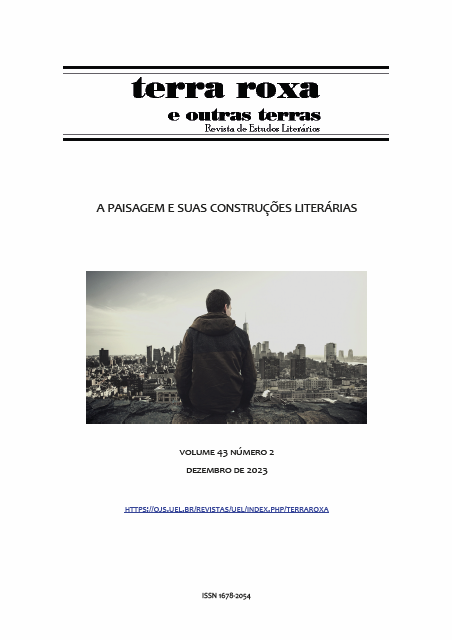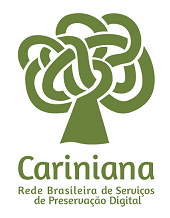José de Alencar and the landscape through a diorama
DOI:
https://doi.org/10.5433/1678-2054.2023vol43n2p209Keywords:
Landscapes, Dioramas, José de Alencar, IndianismAbstract
As a prominent figure in Brazilian Romanticism, José de Alencar portrayed the Brazilian past through his Indianist legends, emphasizing the nation's natural beauty. By extolling the country and celebrating its origins, the author skillfully depicted vibrant national landscapes. The association of these landscapes with the noble purpose of elevating the country is a distinctive feature of works such as Iracema (1865) and Ubirajara (1874). This article examines the construction of landscapes in these works in relation to the formation of dioramas, a resource that gained popularity in the natural history museums of the 19th century. Within the Indianist scenes, the landscapes function as a museal device, characterized by detailed descriptions and carefully selected elements. These elements are also discernible in the formal aspects of the narratives and their paratexts.
Downloads
References
ABREU, Mirhiane Mendes de. Ao pé da página: a dupla narrativa em José de Alencar. Campinas, 2002. Tese (Doutorado em Teoria e História Literária) - Instituto de Estudos da Linguagem da UNICAMP, Campinas, 2002. Disponível em: https://www.repositorio.unicamp.br/acervo/detalhe/276947?guid=1668463232137.
ALENCAR, José de. Sonhos d'Ouro. Rio de Janeiro: Letras e Artes, 1964.
ALENCAR, José de. Ubirajara. Porto Alegre: L&PM Pocket, 2001.
ALENCAR, José de. Iracema. São Paulo: Panda, 2015.
BEWELL, Alan. Natures in translation: Romanticism and colonial natural history. Baltimore: Johns Hopkins UP, 2017. DOI: https://doi.org/10.1353/book.49469
COLLOT, Michel. Poética e filosofia da paisagem. Trad. Ida Alves et al. Rio de Janeiro: Oficina Raquel, 2013.
DIORAMAS em museus de ciências. INCT-CPCT Divulgação Científica: Casa de Oswaldo Cruz, Fiocruz. YouTube. 2021. Disponível em: https://www.youtube.com/watch?v=hC5EzI1w38g>.
HUTTERER, Rainer. Construir um diorama é uma tarefa multidisciplinar. Martha Marandino, Graziele Scalfi & Barbara Milan. Janelas para a natureza: explorando o potencial educativo dos dioramas. São Paulo: FEUSP, 2020.
KÜHL, Beatriz Mugayar. Viollet-le-Duc e o Verbete Restauração. Eugène Emmanuel Viollet-le-Duc. Restauração. Cotia: Ateliê, 2000. 9-25.
MERQUIOR, José Guilherme. De Anchieta a Euclides: breve história da literatura brasileira. São Paulo: É Realizações, 2014.
PEIXOTO, Nelson Brissac. Paisagens Urbanas. São Paulo: Senac, 2004.
RENAN, Ernest. Que é uma nação? Trad. de Samuel Titan Jr. Plural: Revista de Ciências Sociais, São Paulo, v. 4, p. 154-75, 1997. DOI: https://doi.org/10.11606/issn.2176-8099.pcso.1997.75901
RICUPERO, Bernardo. O romantismo e a ideia de nação no Brasil (1830-1870). São Paulo: Martins Fontes, 2004.
RUSKIN, John. A lâmpada da memória. Cotia: Ateliê, 2008.
Downloads
Published
How to Cite
Issue
Section
License
Copyright (c) 2023 Ana Maria Amorim Correia

This work is licensed under a Creative Commons Attribution 4.0 International License.
Authors who publish in this journal agree to the following terms:
a) The authors retain the copyright and grant the journal the right of first publication, the work being simultaneously licensed under the Creative Commons Attribution-NonCommercial 4.0 International License, allowing the sharing of the work with acknowledgment of the authorship of the work and initial publication in this journal.
b) Authors are authorized to assume additional contracts separately, for non-exclusive distribution of the version of the work published in this journal (eg, publish in an institutional repository or as a book chapter), with acknowledgment of authorship and initial publication in this journal.
c) Authors are allowed and encouraged to publish and distribute their work online (e.g. in institutional repositories or on their personal page) after the editorial process, as this can generate productive changes as well as increase impact and citation of the published work (See The Effect of Open Access).
d) The authors of the approved works authorize the journal to, after publication, transfer their content for reproduction in content indexers, virtual libraries and the like.
e) The authors assume that the texts submitted for publication are of their original creation, taking full responsibility for their content in case of any objection by third parties.



















